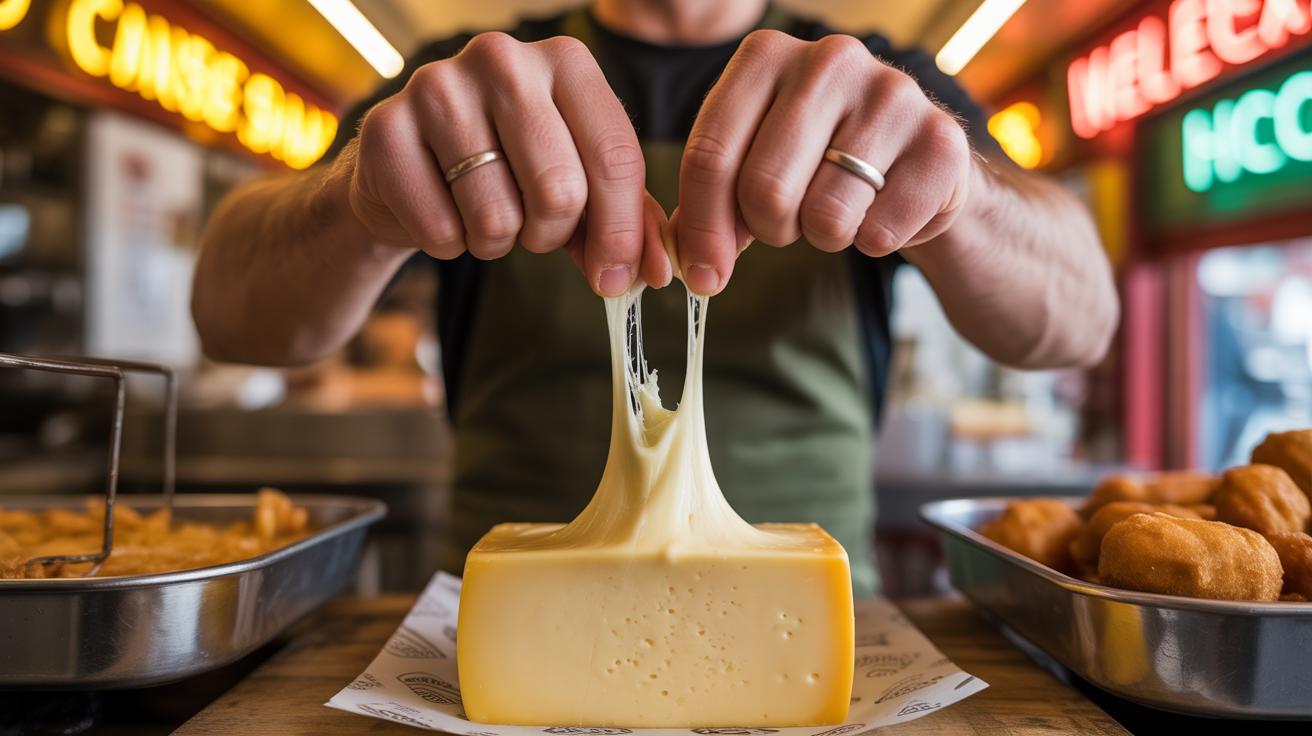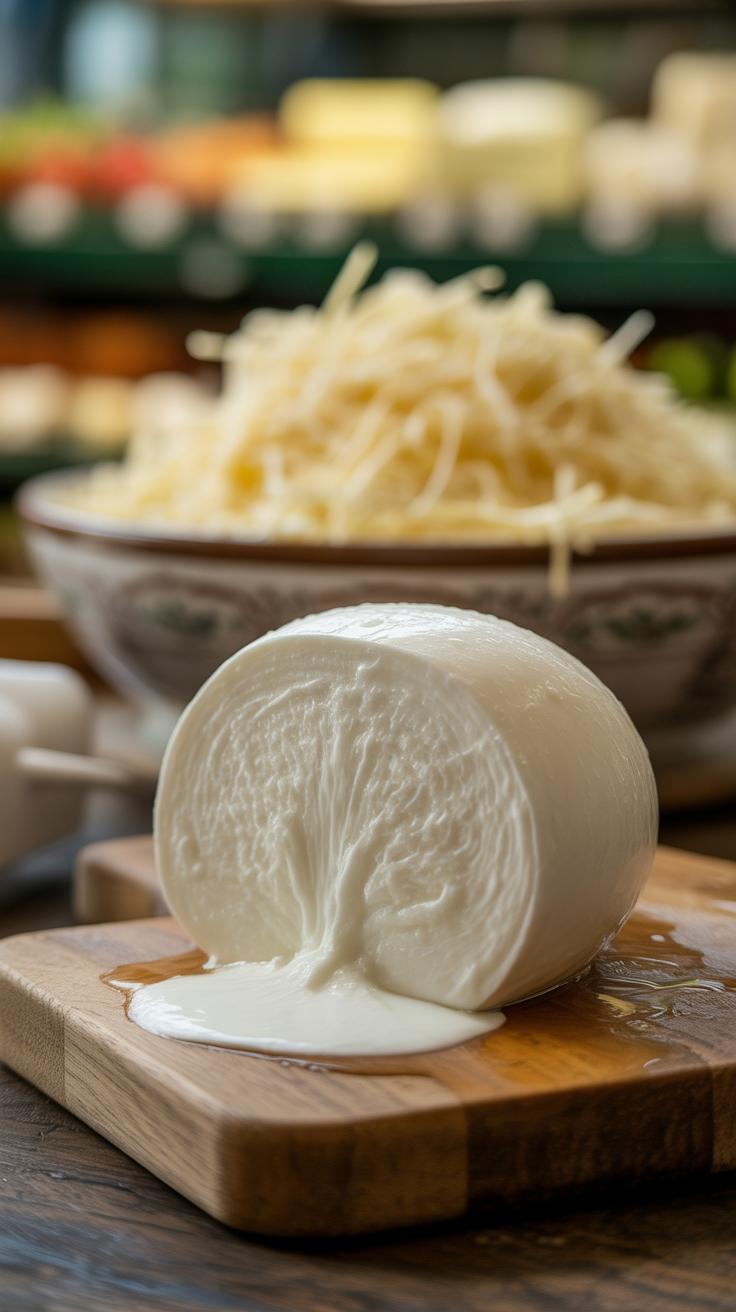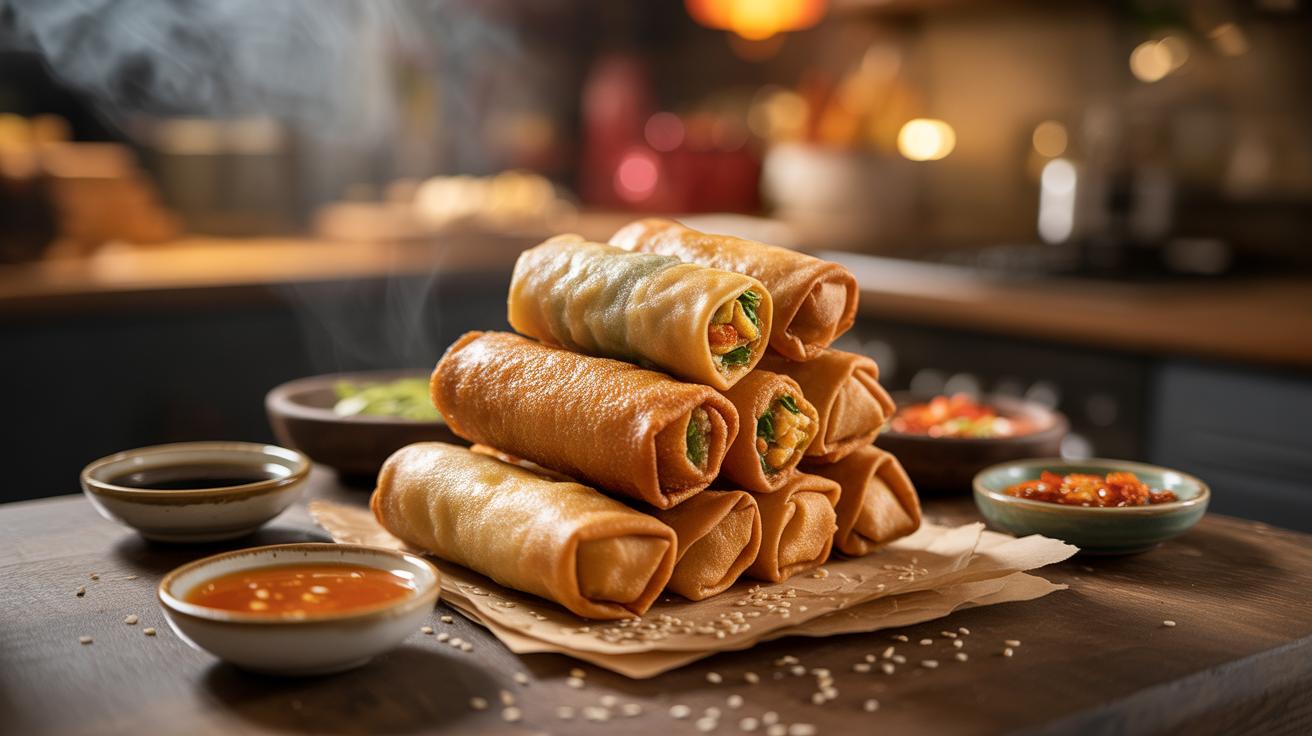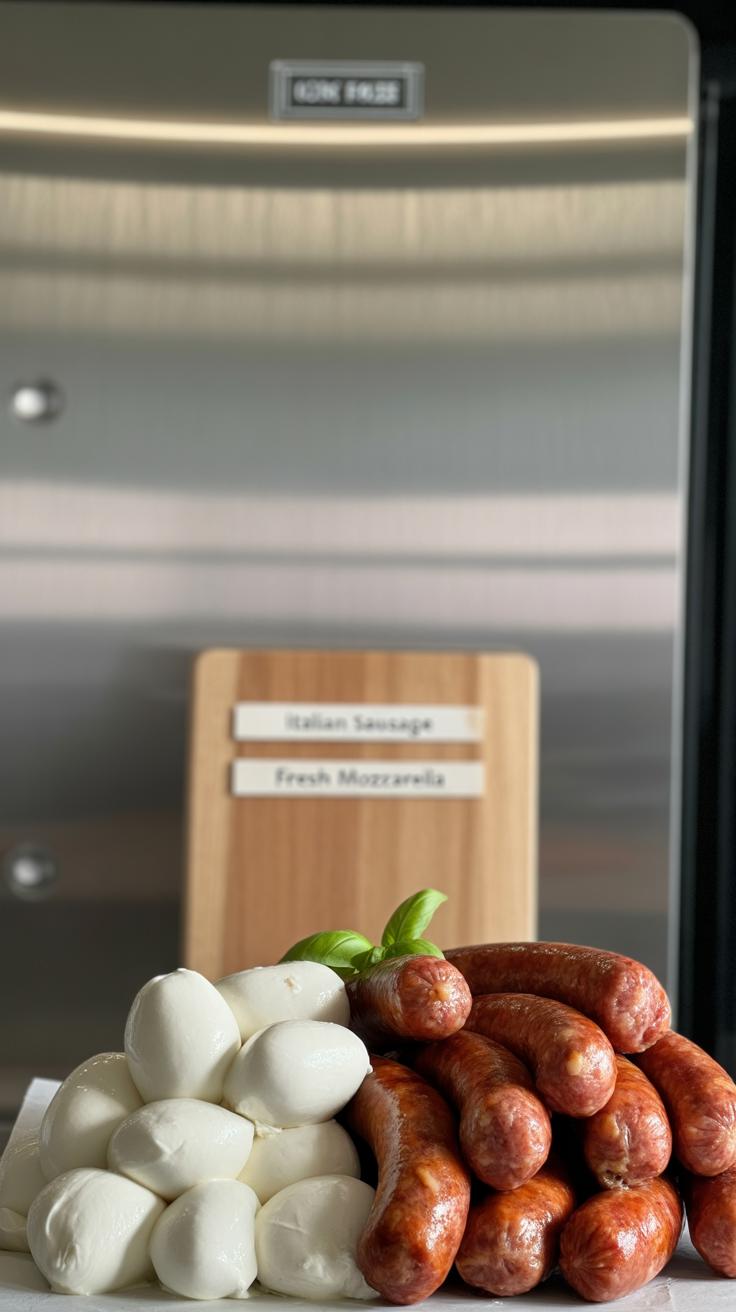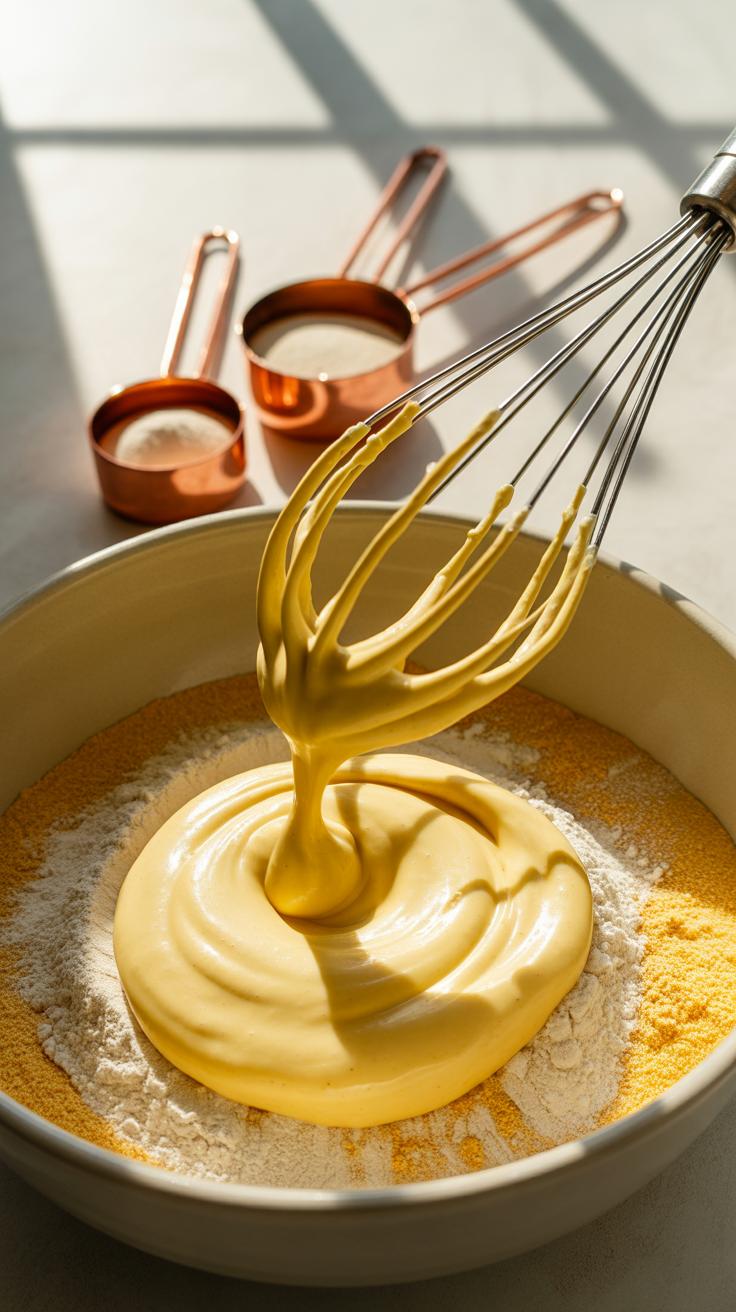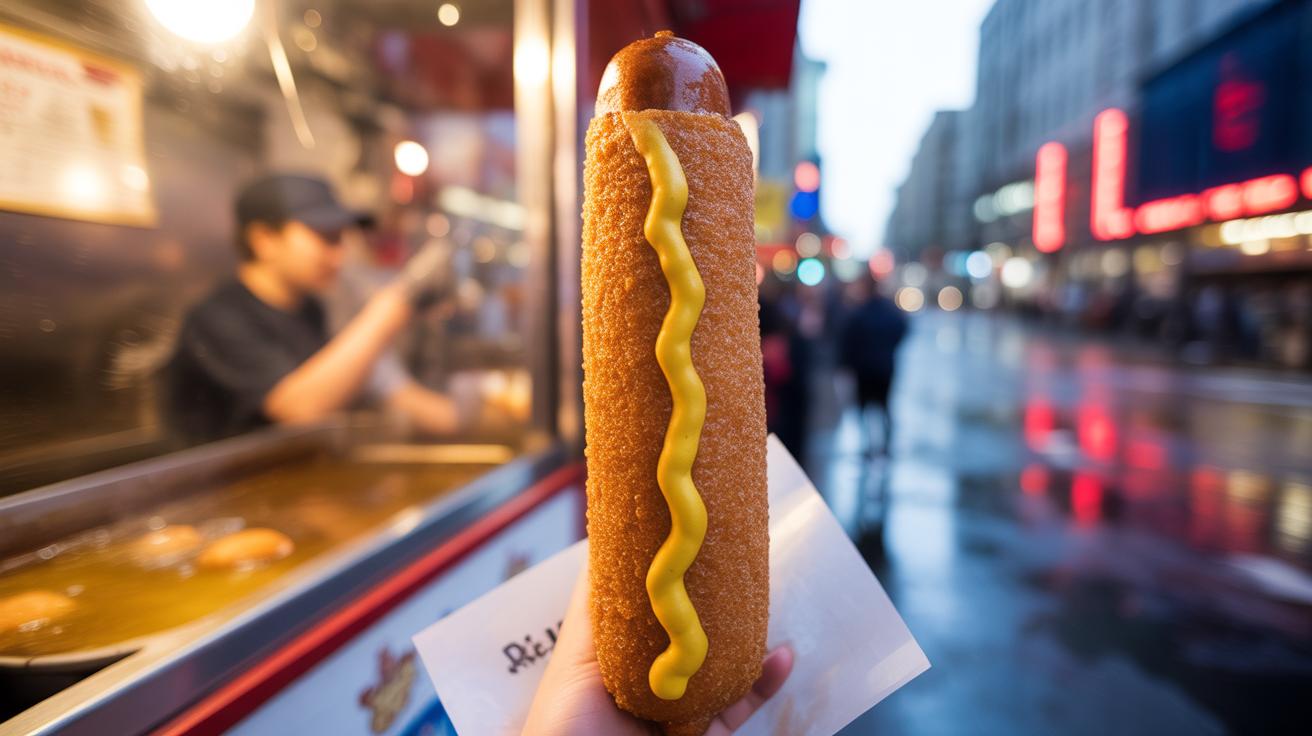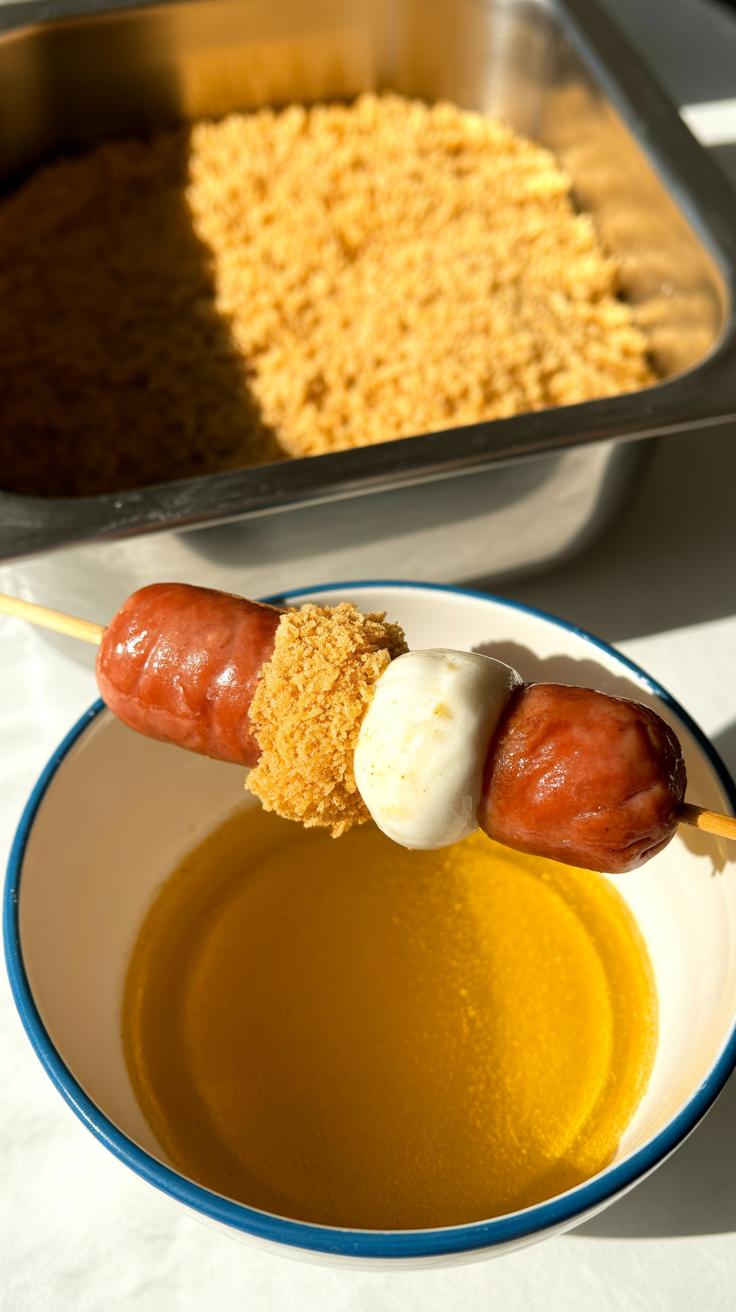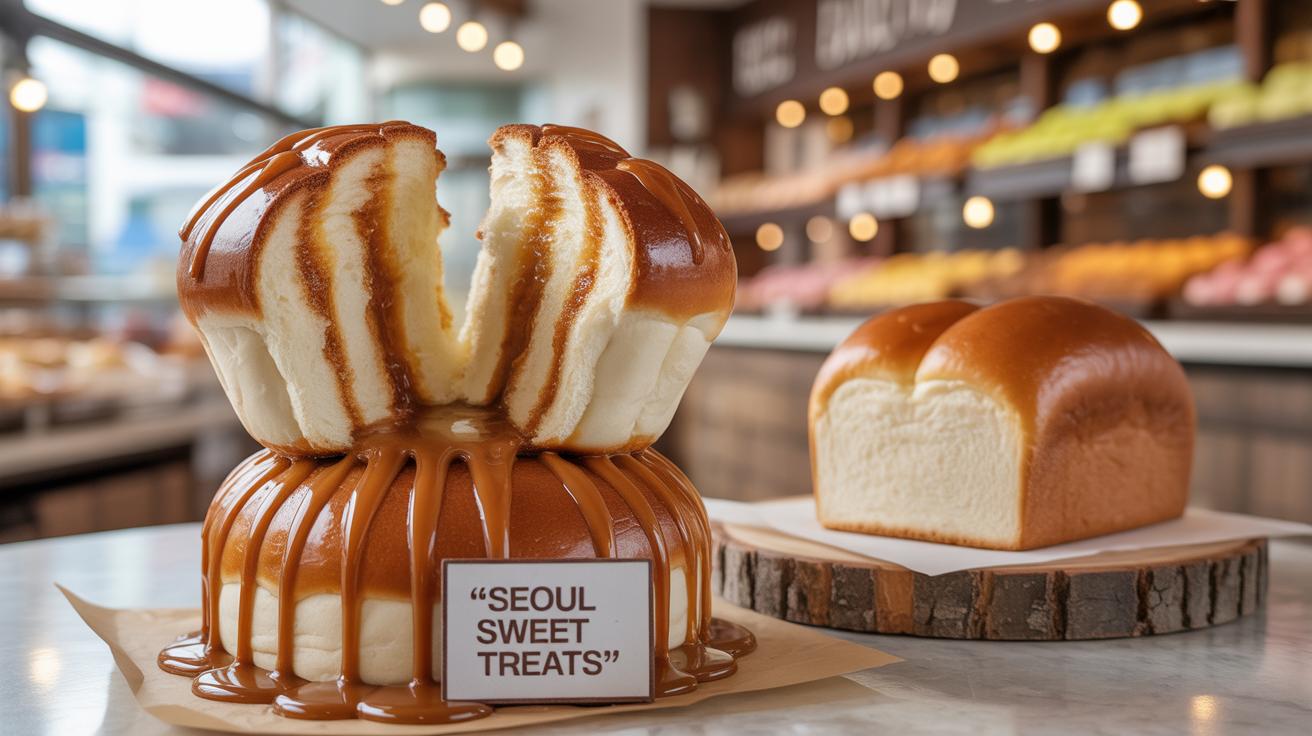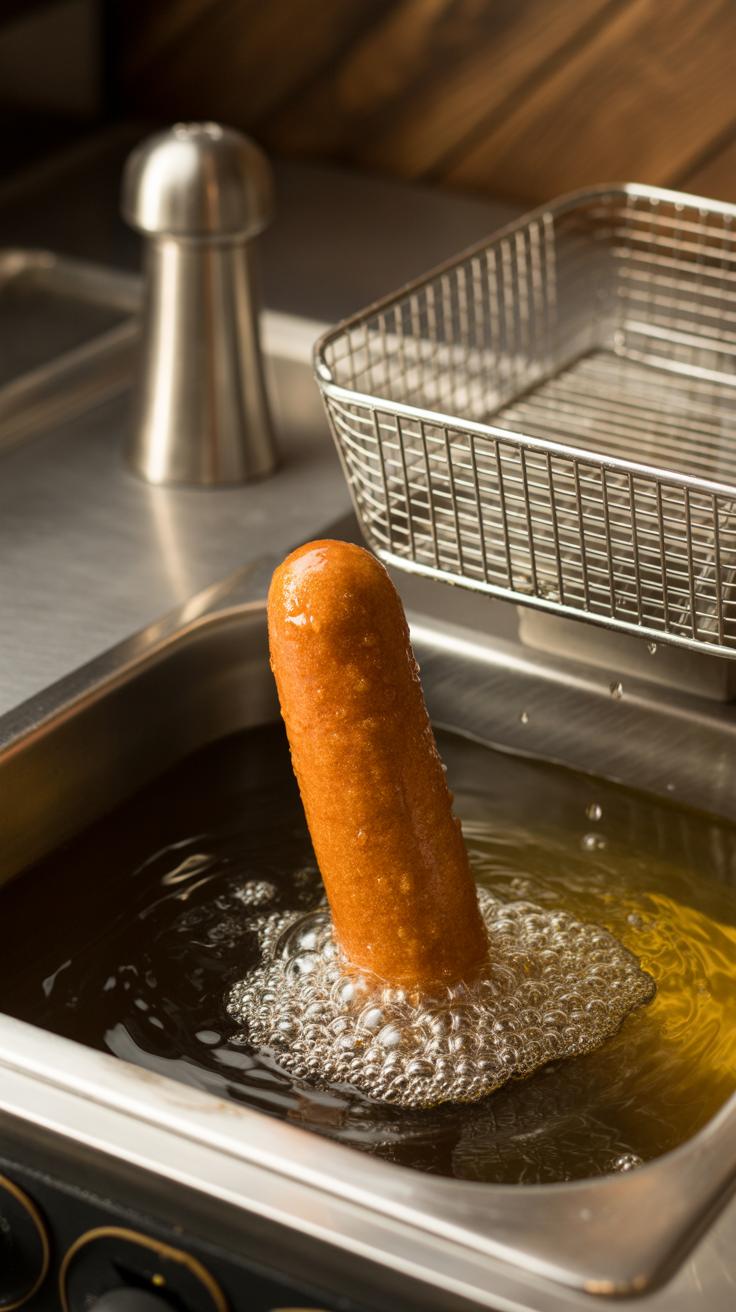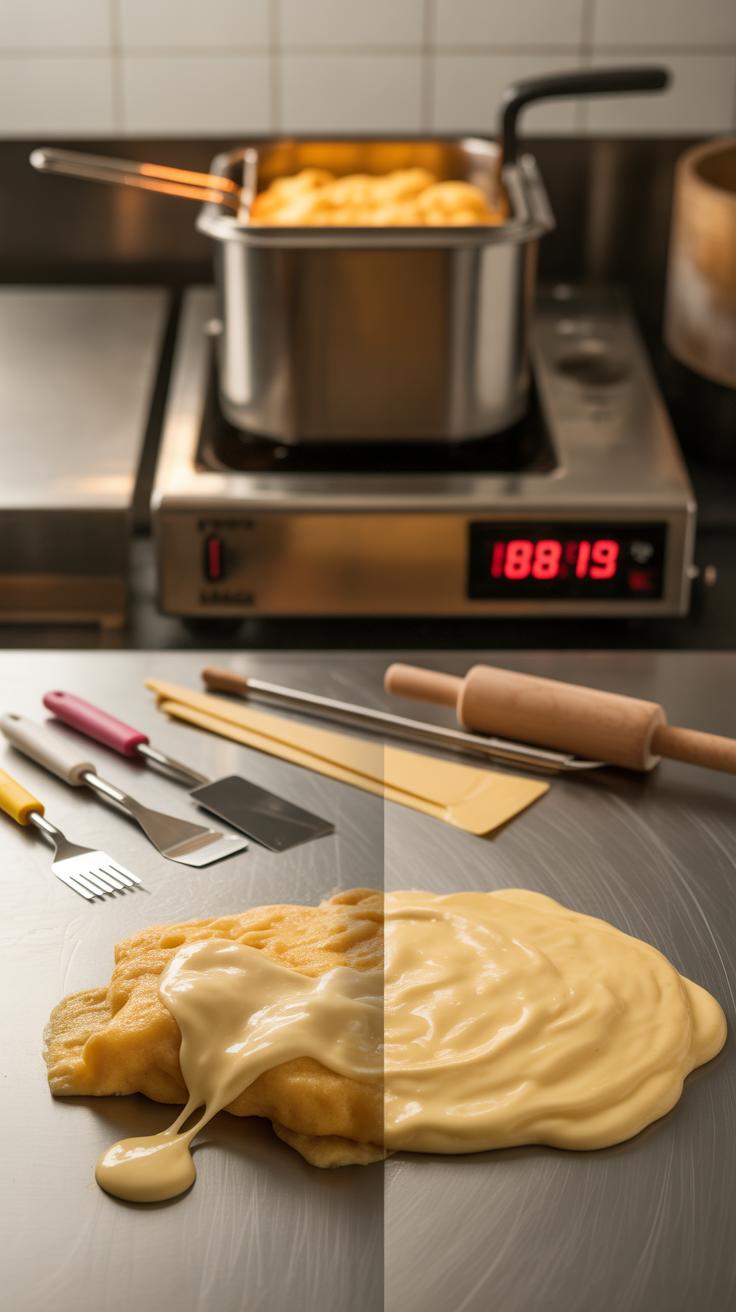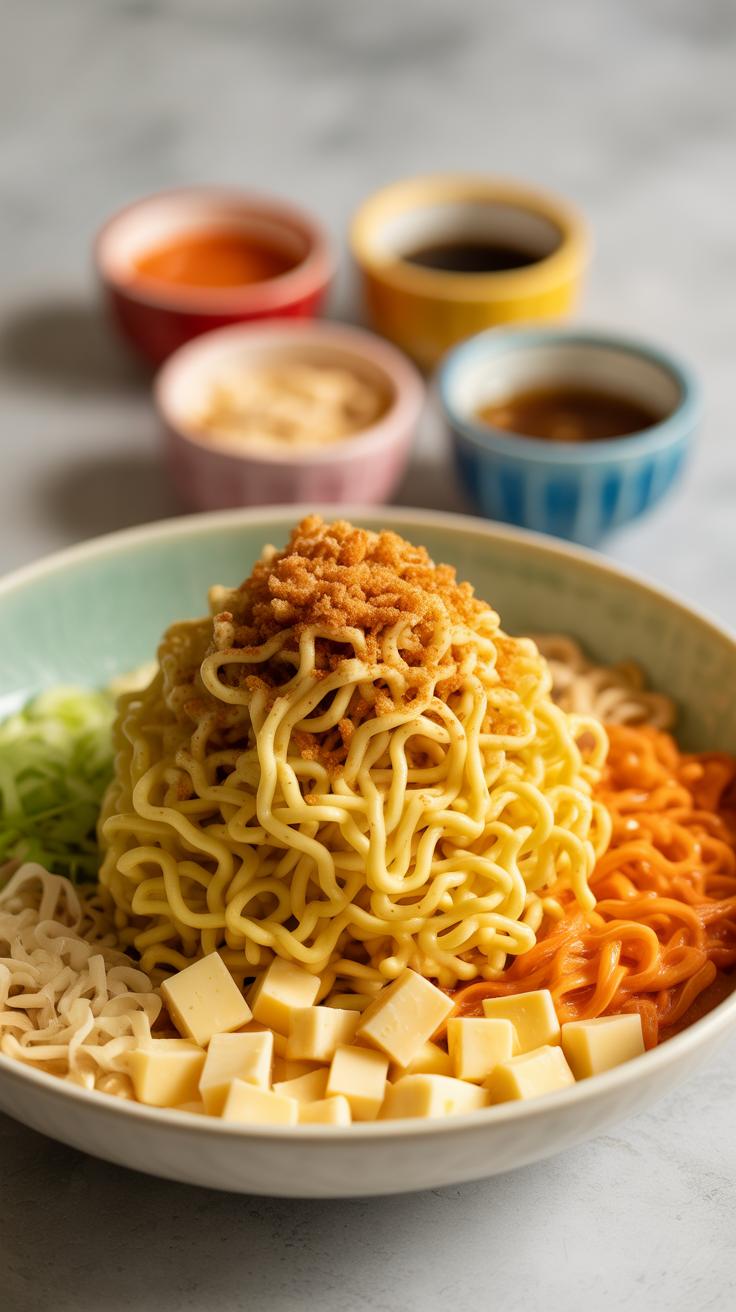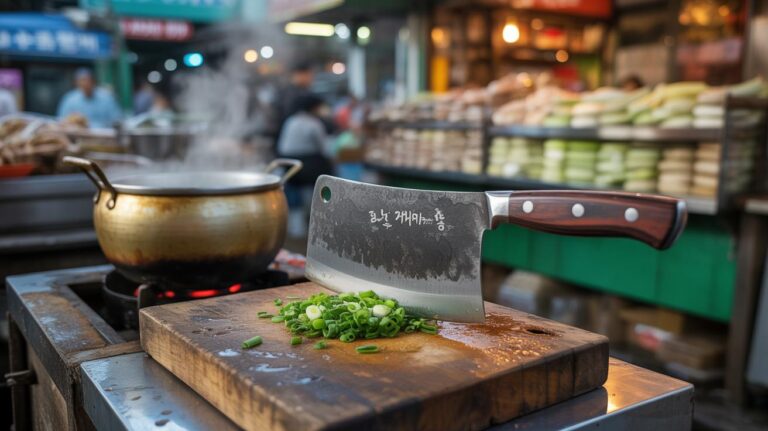Introduction
If you love tasty snacks that are fun to eat, you will enjoy learning about Corn Dogs With Mozzarella Stretch Like A Pro. A corn dog is a hot dog coated in a thick layer of cornmeal batter and fried until crispy. Adding mozzarella inside takes this classic treat to a new level with cheesy goodness that stretches with every bite.
This article will guide you step-by-step through making perfect corn dogs with mozzarella. We will explore the history of corn dogs, how to prepare the batter, how to use mozzarella for that amazing cheese pull, and tips for frying them so they come out golden and delicious. Whether you want to impress your family or try a new recipe, this guide is for you.
The History of Corn Dogs
Where Corn Dogs Came From
The corn dog’s story is tied closely to immigrant culture in the United States, especially German immigrants who brought their love of sausages. The idea of coating a sausage in a cornmeal batter and frying it might seem simple, but it wasn’t always that way. People often credit early fairs and carnivals for popularizing this handheld treat, though the exact origin is a bit fuzzy.
Several claims exist about who invented the corn dog first, with patents appearing in the late 1930s and early 1940s. One interesting detail is that the sausage-on-a-stick concept might have been inspired by similar foods in Europe, where meats wrapped in dough were common. But it was the use of cornmeal batter—a distinctly American touch—that made corn dogs stand out.
Many believe the connection to German immigrants helped shape the sausage choice, but the batter coating came from the Southern U.S., where cornmeal was a staple. This combination, appearing around state fairs, led to the legendary status corn dogs hold today.
Corn Dog Variations Around the World
While corn dogs are most associated with the U.S., they’ve popped up in different forms elsewhere, sometimes surprising people who think they’re a solely American snack. Canada has its own version called the “pogo,” named after a popular brand, which is basically the same but often enjoyed with mustard or ketchup.
In Australia, similar snacks called “dagwood dogs” appear at fairs, where the batter can sometimes be little thicker or even flavored with a bit of spice. France has “cornets de saucisse,” which may involve a slightly different batter or presentation—sometimes even with cheese tucked inside, which hints at how flexible this dish can be.
You could ask yourself: why does this simple battered sausage catch on in so many places? Maybe it’s the portable nature, or the satisfying contrast of crunchy batter and juicy filling. Each variation offers a little twist, but the core idea—meat on a stick with a crispy coating—is surprisingly universal.
What Is Mozzarella Cheese
Mozzarella Cheese and Its Qualities for Corn Dogs
Mozzarella cheese is known for its mild taste and unique texture. It’s a soft cheese made from the milk of cows or water buffalo. What makes mozzarella stand out in corn dogs is its meltability and stretchiness, which creates that satisfying gooey pull you expect when biting in.
When heated, mozzarella melts smoothly without becoming oily or breaking apart. That means it holds together inside the corn dog batter rather than oozing out or turning greasy. If you’ve tried other cheeses in corn dogs, you might have noticed how some fail to achieve that perfect melt. Mozzarella, with its delicate chew and creamy flavor, fits better.
Types of Mozzarella
There are two main types to consider: fresh mozzarella and low-moisture mozzarella. Fresh mozzarella is soft, wet, and has a higher water content. It’s great in salads or eaten fresh, but its moisture can interfere with frying. Low-moisture mozzarella, on the other hand, is drier, firmer, and has a longer shelf life. It melts more evenly, making it the preferred choice for cooking, especially for corn dogs.
If you use fresh mozzarella, expect some watery batter or soggy texture. Low-moisture mozzarella keeps the corn dog crispy on the outside, while still delivering that stretchy inside.
Mozzarella’s Stretchy Texture
The characteristic stretchiness of mozzarella comes from a process called the pasta filata method. During production, the curds are heated and stretched repeatedly, which aligns the proteins into long strands. This alignment explains why mozzarella pulls into those long, elastic ribbons when warmed.
This process also affects how mozzarella reacts to heat. Instead of turning crumbly or just melting into a puddle, it maintains a stretchy consistency—ideal for corn dogs. It’s almost as if the cheese is designed for this purpose, making every bite that much more enjoyable.
Choosing the Right Hot Dogs and Cheese
Picking Hot Dogs for Corn Dogs
Finding the right hot dog can make or break your corn dog experience. You want something that holds up well during frying without bursting open or becoming overly greasy. I usually recommend going for classic beef or pork hot dogs with a firmer casing. They tend to keep their shape better, which helps when you’re working with the batter and deep frying.
Size matters too. Regular-sized hot dogs, about 4 to 6 inches long and not too thick, feel just right. Thick sausages might seem tempting, but they take longer to cook, often leading to a corn dog that’s crispy outside but undercooked inside. If you’re unsure, pick hot dogs with moderate thickness; they find a sweet spot between flavor and cooking time.
Oh, and casing type is something you might overlook at first, but natural casings offer a slightly better snap and texture than skinless ones. It doesn’t need to be fancy — basic, good-quality hot dogs usually do the trick.
Mozzarella Selection Tips
If you’re after that perfect cheese pull, mozzarella choice becomes pretty crucial. Fresh mozzarella has a smooth, creamy texture and melts beautifully, making it my personal favorite. It’s a bit softer, so when you coat it with batter, you need to handle it gently to avoid it becoming too floppy during frying.
Pre-packaged shredded mozzarella is easier to work with and less messy; it also melts well but doesn’t stretch quite the same way fresh mozzarella does. If you want stretchy, gooey bites that pull apart like in pizzerias, fresh is usually better. That said, fresh mozzarella varies—some brands are wetter, which can affect batter adhesion. It’s something I often fiddle with depending on the batch.
Experiment a bit—try fresh mozzarella balls versus low-moisture block mozzarella sliced into sticks. You might find one works better with your batter and frying technique. Which do you prefer: easy prep or that impressive stretch? Both work, but the outcomes are slightly different.
Making the Perfect Corn Dog Batter
Ingredients for the Batter
To get that classic cornmeal batter for corn dogs, you’ll need just a handful of simple ingredients. Start with yellow cornmeal, which gives you the right texture and a bit of that characteristic grainy crunch. Then there’s all-purpose flour, which helps hold everything together and adds a bit of softness. Don’t forget sugar — it balances the savory flavors, but don’t go overboard; just a touch is enough.
Adding baking powder introduces a lightness so the batter isn’t too dense or heavy. Salt is essential as well, for flavor balance. For liquids, you’ll want whole milk or buttermilk, depending on your taste preference, to thicken the batter and bring everything together. Lastly, eggs provide structure and help bind all that dry mix with the wet.
Batter Consistency and Tips
Here’s where things can get tricky. The batter should be thick enough to stick to the hot dog — but not so thick that you get little clumps or it turns into a doughy mess. Think of pancake batter but a bit stiffer; it should coat the stick evenly without sliding off.
To avoid lumps, sift your dry ingredients first. Then, mix the wet ingredients separately before combining everything gently. Don’t over-mix, though — a few small lumps won’t hurt. If the batter feels too runny after mixing, add a little more cornmeal or flour, but cautiously. Too thick and dipping gets difficult.
One personal tip: let the batter rest for about 10 minutes before using. This helps the cornmeal absorb moisture, leading to a better texture when fried. You might wonder if resting really changes much, but it does—at least in my experience.
Assembling Corn Dogs with Mozzarella
Preparing the Hot Dog and Cheese
Start by choosing firm mozzarella, ideally fresh but not too wet—it needs to hold up when heated. Cut the cheese into long, narrow sticks roughly the same length as your hot dogs. They should be thick enough to melt nicely but not so thick that they overwhelm the sausage inside. I usually aim for about a half-inch square cross-section, which seems just right.
Next, take your hot dogs and, carefully, make a slit along one side. This isn’t about slicing through completely, but enough to create a pocket. Some people might skip this, but given how the mozzarella melts, this step helps keep everything centered during frying. If you try to just wrap the cheese without the slit, it might slip out or cause the batter to separate.
If you’re worried about the cheese slipping out, you could press the mozzarella gently into the slit, or even stack smaller pieces inside the cut. The goal is to get a neat, tight combination that fills the hot dog without any gaps. This prep makes the assembly smoother and helps the final corn dog stretch nicely. It’s a bit fiddly but, trust me, worth the effort.
Skewering and Dipping
Grab a sturdy wooden skewer—short ones work better for home frying. Insert it through the center of the prepared hot dog-cheese combo, pushing all the way through so both ends are well pierced. This guarantees stability when it comes time to dip and fry. I learned this the hard way: flimsy skewers or uneven piercing tend to cause your corn dog to fall apart.
When dipping into the batter, hold the skewer firmly and make sure to submerge the entire hot dog evenly. Don’t rush—slow dips help the batter coat fully without dripping excessively. Tilting the skewer slightly helps cover tricky spots around the cheese slit. If the batter feels too thin, it won’t stick well, and if it’s too thick, it might clump on, so consistency matters here.
After dipping, give a gentle shake to remove excess batter. Let it rest briefly upright to settle before frying. This pause can prevent batter from pooling at one end, which I’ve seen ruin a perfectly good corn dog. So, yes, patience during this step is key—even if it might seem unnecessary at first glance.
Frying Corn Dogs to Golden Perfection
Choosing the Right Oil and Temperature
Picking the right oil can make or break your corn dogs. I lean towards oils with a high smoke point like canola, peanut, or vegetable oil. They handle the heat without breaking down or giving off odd flavors. Olive oil? Probably not the best candidate unless you want a smokier taste. The key is keeping your oil temperature steady, usually around 350 to 375°F. Too low, and you’ll get greasy, soggy corn dogs; too high, and the outside burns before the inside cooks through.
Using a thermometer helps, although I admit sometimes I eyeball it when I’m in a rush. But if you do test, keep in mind the temperature might drop when you add the corn dogs. So less is more—don’t overcrowd the pan.
Frying Techniques and Tips
When frying, gently lower the corn dogs into the oil, giving them enough room to move a bit. A cramped pot equals uneven cooking, and that’s frustrating. Turn them occasionally—every 1 to 2 minutes—using tongs. It spreads the heat evenly and keeps the coating crisp on all sides.
Timing can be tricky. Usually, 3 to 5 minutes does the trick, but I always trust how the corn dogs actually look and feel. If the crust is golden and firm, that’s your signal. If you pull them out too soon, the coating might flake or feel doughy inside.
Drain the fried corn dogs on a rack or paper towels to catch excess oil. Resist the urge to stack them immediately; they steam each other and lose crispness.
One time, I left mine in a tad too long, and while the crust was darker, the cheese inside stretched wonderfully. There’s room to experiment, I guess.
Serving and Enjoying Corn Dogs
Once your mozzarella-stuffed corn dogs are fried to that perfect golden crisp, how you serve them can really shape the entire experience. They’re excellent on their own but pairing them thoughtfully makes snacking—or even a meal—more satisfying. I often find that simple yet thoughtfully chosen sides bring out new layers of flavor you might not expect.
Start with dipping sauces. Classic options like mustard and ketchup are easy favorites, but don’t limit yourself there. Spicy mayo offers a gentle heat that contrasts nicely with the cheesy interior. Ranch dressing brings a creamy coolness that balances the corn dog’s texture. For something a bit different, a smoky barbecue sauce or even a tangy honey mustard can add an unexpected twist. It’s fun to try dipping sauces that challenge your usual preferences—you might find yourself reaching for a different one each time.
When it comes to sides, think about complementary textures and temperatures. Crisp celery or carrot sticks can add a refreshing crunch, breaking up the richness of the cheese. Coleslaw offers a cold, tangy counterpoint that cuts through the fried coating. If you’re aiming for a fuller meal, simple baked beans or a small salad with a vinaigrette work well, too. Of course, classic French fries or even sweet potato fries pair nicely if you’re leaning into the indulgent side of things.
Do you prefer your corn dogs with something crunchy, creamy, or something acidic on the side? Sometimes, I find myself pondering this question while dipping—and I suspect you might, too. Each bite can be a little different depending on your chosen accompaniments, making the experience a bit more personal each time.
Common Problems and How to Fix Them
Cheese Not Stretching
There’s nothing quite like that satisfying pull when you bite into a mozzarella-filled corn dog. But sometimes, the cheese just doesn’t stretch as you’d expect. Why does that happen? Often, the mozzarella may be too cold or cut too small, which restricts its ability to melt and stretch properly. Using a low-moisture mozzarella is usually better since it melts well without becoming rubbery.
Try letting the cheese sit at room temperature for a little while before assembling your corn dogs. Also, avoid pre-shredded mozzarella, which can contain anti-caking agents that reduce stretchiness. If the cheese still resists, maybe give the corn dogs a slightly longer frying time—just enough to let the cheese soften inside, but not so much that the batter burns. It’s a bit of a balancing act, really.
Batter Falling Off
It’s frustrating when your crispy batter slips off the hot dog as you eat. Usually, this happens because the batter can’t properly grip the surface of the hot dog. One common reason is moisture on the hot dog’s exterior; drying them well before dipping helps a lot.
Also, the batter itself might be too thin or too thick. A batter that’s too runny can slide off, while an overly thick batter can clump and fail to coat evenly. Finding that Goldilocks consistency usually means experimenting a bit. Chilling the batter briefly might firm it up and make it easier to cling. Another trick is to use a skewer and roll the hot dog in the batter slowly, ensuring it coats fully.
Sometimes, I find that chilling the assembled corn dogs in the fridge before frying helps the batter set better, reducing peeling. It may feel a bit tedious but can be worth it when the batter stays put perfectly. Have you tried pressing the batter gently after dipping? It might help but can also make the coating uneven—so watch out for that.
Variations to Try with Corn Dogs and Cheese
When it comes to corn dogs, sticking to mozzarella isn’t your only option. You might want to switch the cheese up for something with a bit more character or texture. For instance, cheddar adds a sharper taste and melts differently, giving you that rich, gooey pull but with a bit more bite. Gouda is another good choice—creamy and mild, it melts smoothly and pairs well with the cornmeal batter.
If you’re feeling adventurous, try pepper jack. It brings a subtle heat and a nice twist if you’re someone who likes a bit of spice. On the softer side, fontina melts well but offers a nuttier flavor that’s surprisingly good. Each cheese changes the experience, so it’s worth testing a few to see what fits your preferences, or maybe even mixing two types.
Beyond swapping cheeses, you can experiment with more fun ingredients. Adding herbs like chives or thyme into the batter can give your corn dogs surprising freshness. Little bursts of flavor are possible by mixing in spices such as smoked paprika or garlic powder—nothing too overpowering but enough to notice.
Some people like stuffing their corn dogs with tiny bits of cooked bacon or caramelized onions to add an extra dimension inside. On the outside, drizzling sauces like honey mustard, spicy mayo, or even a touch of sriracha can elevate the whole bite. It really depends on what you enjoy and what you’re willing to try. Sometimes, getting a bit creative leads to a new favorite, or maybe just a fun kitchen experiment.
Conclusions
Corn Dogs With Mozzarella Stretch Like A Pro combine two favorites: the crispy, golden corn dog and the stretchy, melty mozzarella cheese. By following the techniques shared, you can create this mouthwatering snack easily at home. Each bite offers a satisfying crunch and a cheesy center that is sure to delight anyone who tries it.
Remember to use fresh mozzarella and properly prepare your batter and frying oil for the best results. With practice, you will be able to serve delicious corn dogs that look and taste like a pro made them. Enjoy making and sharing these fun treats with your family and friends.

